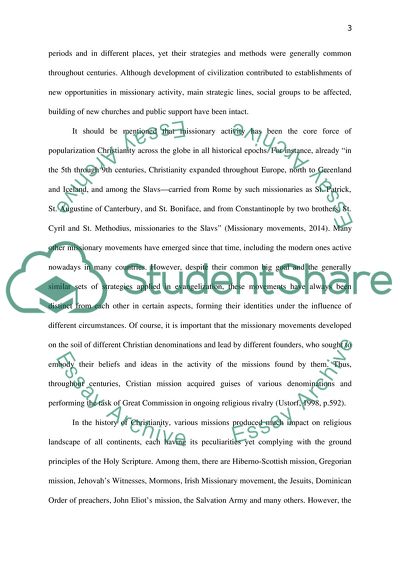Cite this document
(Missionary Movements Article Example | Topics and Well Written Essays - 3000 words, n.d.)
Missionary Movements Article Example | Topics and Well Written Essays - 3000 words. https://studentshare.org/religion-and-theology/1862112-discuss-the-following-statement-aposhistorical-missional-movements-often-formed-their-long-term-distinctive-beliefs-and-identities-based-on-a-founding-missional-leaderaposs-influence
Missionary Movements Article Example | Topics and Well Written Essays - 3000 words. https://studentshare.org/religion-and-theology/1862112-discuss-the-following-statement-aposhistorical-missional-movements-often-formed-their-long-term-distinctive-beliefs-and-identities-based-on-a-founding-missional-leaderaposs-influence
(Missionary Movements Article Example | Topics and Well Written Essays - 3000 Words)
Missionary Movements Article Example | Topics and Well Written Essays - 3000 Words. https://studentshare.org/religion-and-theology/1862112-discuss-the-following-statement-aposhistorical-missional-movements-often-formed-their-long-term-distinctive-beliefs-and-identities-based-on-a-founding-missional-leaderaposs-influence.
Missionary Movements Article Example | Topics and Well Written Essays - 3000 Words. https://studentshare.org/religion-and-theology/1862112-discuss-the-following-statement-aposhistorical-missional-movements-often-formed-their-long-term-distinctive-beliefs-and-identities-based-on-a-founding-missional-leaderaposs-influence.
“Missionary Movements Article Example | Topics and Well Written Essays - 3000 Words”. https://studentshare.org/religion-and-theology/1862112-discuss-the-following-statement-aposhistorical-missional-movements-often-formed-their-long-term-distinctive-beliefs-and-identities-based-on-a-founding-missional-leaderaposs-influence.


